Back in November, BovINE EU held its seventh meeting where the 18 organisations spread across 10 EU countries convened in the Navarra region of Spain for a series of presentations, workshops and farm visits.
Two of the themes associated with BovINE EU are socio economic resilience and efficiency and quality within the European beef industry.
With the Navarra region being a major vegetable production area, since 2020 beef farmers have begun to utilise the byproducts of the vegetable industry as a feed source for their finishing cattle in lieu of high-cost maize and soya-based ration.
TRASA-Subproduct treatment plant
TRASA is the first company in Spain to formulate a specific ruminant feed from the byproducts of the vegetable industry. In its purpose-built facility, the company combines the waste materials such as peas, carrots, artichokes, potatoes, broccoli, legumes and spinach with concentrates and a roughage source (hay or straw) added as required.
The mix is carefully weighed and mixed in specially constructed diet feeders, with minerals and water added as required. The mix is then pressed into a bale form (microsilos), wrapped in a similar way to conventional silage and stored on the facility.
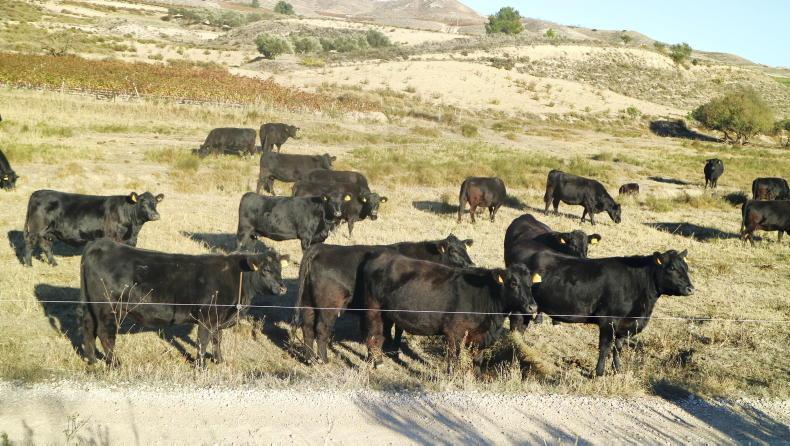
Irish-bred Angus cows have adopted well to the Spanish climate.
Alternatively, farmers can choose to arrange loose delivery in bulk form with the plant.
TRASA offers a range of complementary and complete feeds, with specialised feed formulations for dairy, suckler or beef cattle.
The incorporation of vegetable byproducts as raw materials, for the feedstuff is claimed by TRASA to improve digestibility and rumen health, contributing to animal welfare.
Feeds contain high concentrations of vitamins, amino acids and natural antioxidants, with these passing through into the meat eaten by consumers.
TRASA also claims that the vegetable byproducts improve the stability of the ruminal flora, decreasing the risk of acidosis occurring.
Eating quality of meat is said to be unaffected, with studies from the Public University of Navarra (UPNA) demonstrating that this feeding system does not affect the meat quality.
The feedstuffs (hay, straw, vegetable byproducts) in the feed are produced locally, have a low carbon footprint and reduced food waste is also a positive.
One of the farms feeding the TRASA created feedstuff is the SC Robles beef farm, located in the Navarra region in north Spain.
The Roble farm is made up of 200 suckler breeding cows, with a mix of Limousin, Blonde d’Aquitaine and Pirenaica (a local breed), as well as the recent introduction of Angus cows, some of which were sourced in Ireland.
All feed is bought in, utilising the vegetable byproducts mixes as the sole feed source.
The formulation varies depending on stock type, with cull cows and young bulls slaughtered off farm receiving a different diet to the suckler cow and calf pairs.
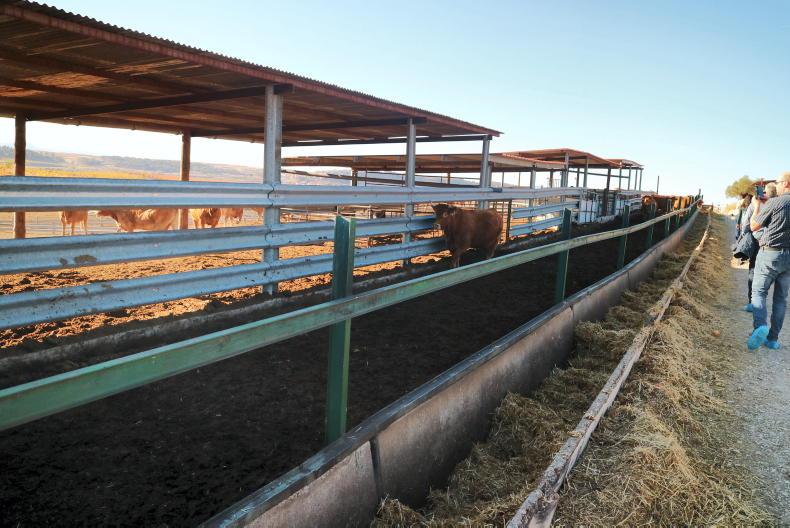
Cows are contained in large, arid paddocks with basic shade provided using sheeting and crash barriers. The TRASA formulated feed is fed along the front in feed bunkers.
While the continental breeds are targeted to be finished at 12 to 13 months of age as bulls, Angus-bred bull weanlings are castrated and are let mature, with slaughter age typically between 24 and 36 months.
Using non-continental breeds known for high marbling has been one of the actions investigated as part of the production efficiency and meat quality (PEMQ) theme within BovINE.
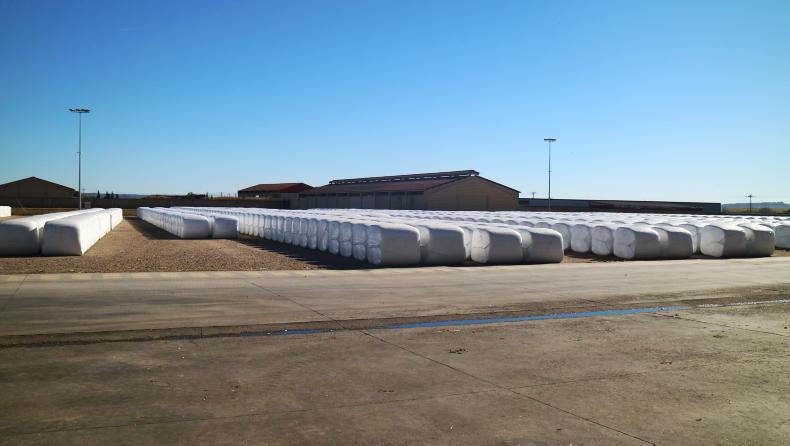
Microsilos are stored at the TRASA plant for collection by farmers, while bulk options exist for transporting longer distances.
The PEMQ theme within BovINE has the dual purpose of improving the production efficiency at farm level in the European context while also focusing on meat quality.
Back in November, BovINE EU held its seventh meeting where the 18 organisations spread across 10 EU countries convened in the Navarra region of Spain for a series of presentations, workshops and farm visits.
Two of the themes associated with BovINE EU are socio economic resilience and efficiency and quality within the European beef industry.
With the Navarra region being a major vegetable production area, since 2020 beef farmers have begun to utilise the byproducts of the vegetable industry as a feed source for their finishing cattle in lieu of high-cost maize and soya-based ration.
TRASA-Subproduct treatment plant
TRASA is the first company in Spain to formulate a specific ruminant feed from the byproducts of the vegetable industry. In its purpose-built facility, the company combines the waste materials such as peas, carrots, artichokes, potatoes, broccoli, legumes and spinach with concentrates and a roughage source (hay or straw) added as required.
The mix is carefully weighed and mixed in specially constructed diet feeders, with minerals and water added as required. The mix is then pressed into a bale form (microsilos), wrapped in a similar way to conventional silage and stored on the facility.

Irish-bred Angus cows have adopted well to the Spanish climate.
Alternatively, farmers can choose to arrange loose delivery in bulk form with the plant.
TRASA offers a range of complementary and complete feeds, with specialised feed formulations for dairy, suckler or beef cattle.
The incorporation of vegetable byproducts as raw materials, for the feedstuff is claimed by TRASA to improve digestibility and rumen health, contributing to animal welfare.
Feeds contain high concentrations of vitamins, amino acids and natural antioxidants, with these passing through into the meat eaten by consumers.
TRASA also claims that the vegetable byproducts improve the stability of the ruminal flora, decreasing the risk of acidosis occurring.
Eating quality of meat is said to be unaffected, with studies from the Public University of Navarra (UPNA) demonstrating that this feeding system does not affect the meat quality.
The feedstuffs (hay, straw, vegetable byproducts) in the feed are produced locally, have a low carbon footprint and reduced food waste is also a positive.
One of the farms feeding the TRASA created feedstuff is the SC Robles beef farm, located in the Navarra region in north Spain.
The Roble farm is made up of 200 suckler breeding cows, with a mix of Limousin, Blonde d’Aquitaine and Pirenaica (a local breed), as well as the recent introduction of Angus cows, some of which were sourced in Ireland.
All feed is bought in, utilising the vegetable byproducts mixes as the sole feed source.
The formulation varies depending on stock type, with cull cows and young bulls slaughtered off farm receiving a different diet to the suckler cow and calf pairs.

Cows are contained in large, arid paddocks with basic shade provided using sheeting and crash barriers. The TRASA formulated feed is fed along the front in feed bunkers.
While the continental breeds are targeted to be finished at 12 to 13 months of age as bulls, Angus-bred bull weanlings are castrated and are let mature, with slaughter age typically between 24 and 36 months.
Using non-continental breeds known for high marbling has been one of the actions investigated as part of the production efficiency and meat quality (PEMQ) theme within BovINE.

Microsilos are stored at the TRASA plant for collection by farmers, while bulk options exist for transporting longer distances.
The PEMQ theme within BovINE has the dual purpose of improving the production efficiency at farm level in the European context while also focusing on meat quality.









 This is a subscriber-only article
This is a subscriber-only article






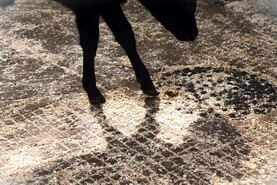

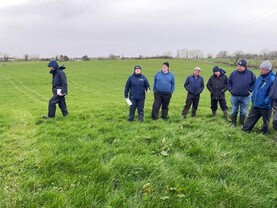

SHARING OPTIONS: